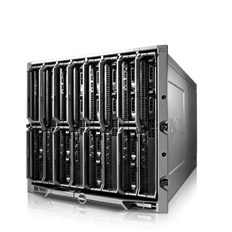Virtualization — Ready for Small Businesses
Virtualization technology was initially embraced by large enterprises. These large IT shops had the resources to invest in the hardware, software, consulting, and training necessary to take advantage of virtualization technology. These early adopters paid the price in terms of high costs for virtualization software and early blade servers, and also in terms of dealing with the inevitable bugs that accompany any new technology. On the other hand, these early adopters also benefited significantly from the reduced TCO (Total Cost of Ownership) which is made possible by virtualization. They saw their capital expense decrease due to reduced hardware purchases and they saw their operating costs shrink due to reduced costs for power, cooling, and maintenance.
Now that the early adopters have helped clear the path for virtualization technology, the early majority can achieve many of the same benefits without suffering through the same adoption curve. A survey earlier this year by Symantec showed that although only 10% of small business have implemented virtualization, 17% are in the process of implementing it and another 19% are trialing the technology. An additional 24% have virtualization in the discussion and planning phases.
The Benefits of Virtualization for Small Business
 Reduced hardware costs – Small businesses typically have needs for several different types of servers, but each server is not pushed to capacity. Virtualization can help host more virtual servers on fewer physical servers.
Reduced hardware costs – Small businesses typically have needs for several different types of servers, but each server is not pushed to capacity. Virtualization can help host more virtual servers on fewer physical servers.
Reduced operating costs – Increasing energy costs are making life even more difficult for small businesses. The EPA plans to close down 20% of American coal plants by 2012. This will cause electricity costs in many parts of the country to skyrocket. Reducing the number of physical servers reduced power and cooling costs, which represent a surprisingly large portion of the lifetime TCO for a server.
Improved backup and disaster recovery options – With virtual servers, it is far easier to take a “snapshot” copy of a production server. That snapshot can then be copied to tape and taken off-site. In the event of a disaster, it can be restored easily to a new virtual server in another data center.
Preparation for the cloud – Moving from physical servers to virtual server containers is one first step towards moving to cloud-based computing. Once a “server” becomes a “file”, it is far easier to upload that “file” to a cloud-based computing provider and move all or part of your data-center into the cloud.
Low cost test and development environments – Large enterprises have benefited from the use of test and development environments for years, but the costs involved have kept them out of the reach of most small business. The ease and low-cost of setting up a virtual server makes it possible for even small business to create virtual test and development environments, allowing professional change management processes to be implemented.
Small businesses are now faced with a decision as to whether to join the early majority in adopting virtualization, waiting to join the late majority, or not adopting virtualization at all. Those who adopt virtualization as part of the early majority will be able to benefit from the investments made by the innovators and early adopters before them. Those who wait to become part of the late majority will delay participation in the cost savings offered by virtualization, reducing their long-term profit margins.


Comments - One Response to “Virtualization — Ready for Small Businesses”
Sorry but comments are closed at this time.